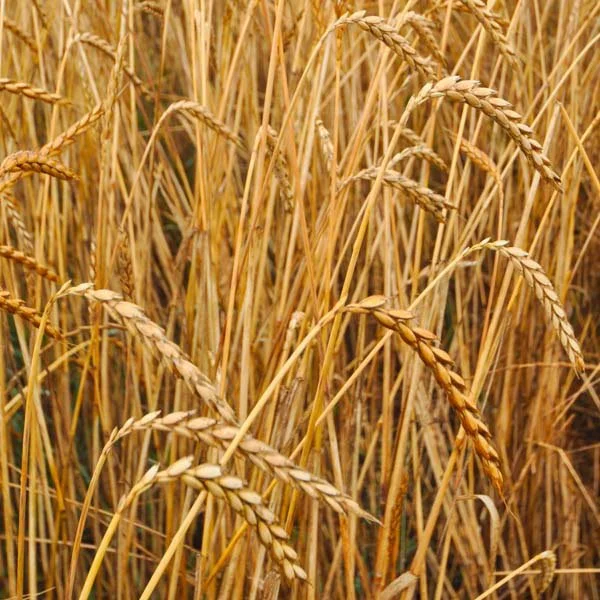
Ancient Wheats
History - Ancient Wheats
Early original wheat varieties exhibiting their original characteristics are experiencing a modern revival. Consumers are finding hidden benefits in the grains untouched by time. Wheat has been used as a staple food source since the Stone Age (ca. 6700BC) and cultivated from around 5000BC. Modern wheat varieties (Triticum aestivum) have evolved by differentiation of genome compositions from three ancestral grains and by mostly crossing with wild wheat grasses. Ancient wheats, including spelt and emmer, retain a tight protective hull around the kernel at maturity. The hull has to be removed mechanically before the wheat seed can be milled into flour.
Although a difficult process to remove, the outer hull protects the kernel from insect damage and preserves the quality of the kernel during storage. Modern wheat's hull is easily removed with harvesting equipment, therefore, modern wheats gained popularity, replacing the ancient wheats, due to their lower costs of production.
However, ancient wheats are regaining popularity because of their unique flavour and emerging health benefits being revealed by studies. Ancient wheats are suitable to modern, sustainable no-till farming methods. Many products are made with ancient wheats including bread, pasta, noodles, breakfast cereals and biscuits. Each ancient wheat exhibits its own flavour and texture, and all are truly GMO free.
Spelt (Triticum Spelta)
Spelt is one of the original grains known to man. Thought to have originated in Iran (6,000-5,000BC) and eventually spread to Europe about 5,000 years ago. Spelt has a superior flavour to modern bread wheat but it needs to be dehulled and has a lower grain yield so it lost favour as an agricultural crop.
Spelt is a hexaploid wheat with 42 chromosomes. Modern bread wheats are also hexaploid wheats with 42 chromosomes. Spelt has always been popular in certain parts of Europe and has recently regained worldwide popularity due to it's excellent baking quality, health benefits and flavour.
Geoff Brown from Buckwheat Enterprises Pty Ltd (Bio-Oz) started the Australian Spelt industry in 1987 on his farm in central NSW and Bio-Oz is now a leading supplier of Spelt and other ancient wheat flours.
Spelt is an ancient wheat and is not gluten-free.
Our Australian Spelt is grown using Sustainable Farming methods. Please see our Sustainable Farmers page for more information. Our spelt is not grown organically.
Please be aware that "Australian Certified Organic" does not necessarily mean "Product of Australia". Check your packaging to ensure you are buying Product of Australia. Read the small print.
Emmer (Triticum dicoccum) and Khorasan (Triticum turanicum)
Emmer is thought to have originated in a similar area to Einkorn in the late Paleolithic era (17,000BC) and cultivation began around 10,000BC. Cultivated Emmer became the dominant wheat grown in the Middle East, Europe and North Africa from 10,000 BC to 4,000BC, and is still grown today in parts of North Africa, India and Italy. Emmer is a Tetraploid wheat with 28 chromosomes.
Ancient Khorasan Wheat and modern Durum wheat are also tetrapoid wheats with 28 chromosomes. We have Australian grown Emmer and Khorasan flour available.
Our Australian Emmer and Khorasan are grown using Sustainable Farming methods. Please see our Sustainable Farmers page for more information. Our Emmer and Khorasan flour are not grown organically.
Please be aware that "Australian Certified Organic" does not necessarily mean "Product of Australia". Check your packaging to ensure you are buying Product of Australia. Read the small print.
Sorry, we do not have Emmer or Khorasan grain available for home milling or growing.


